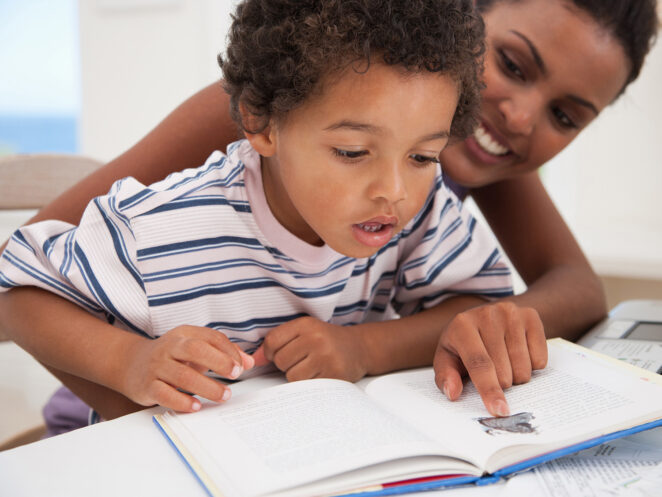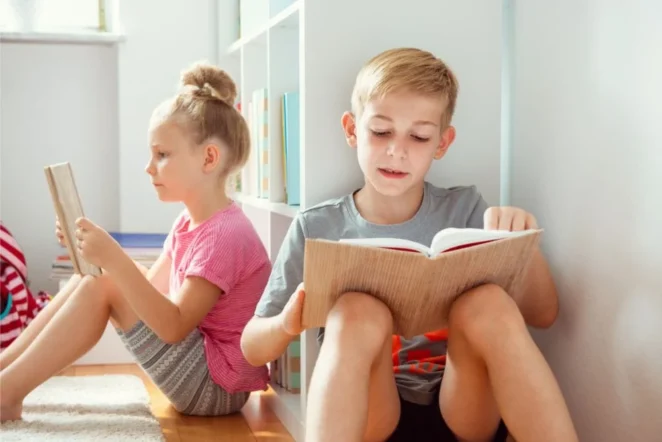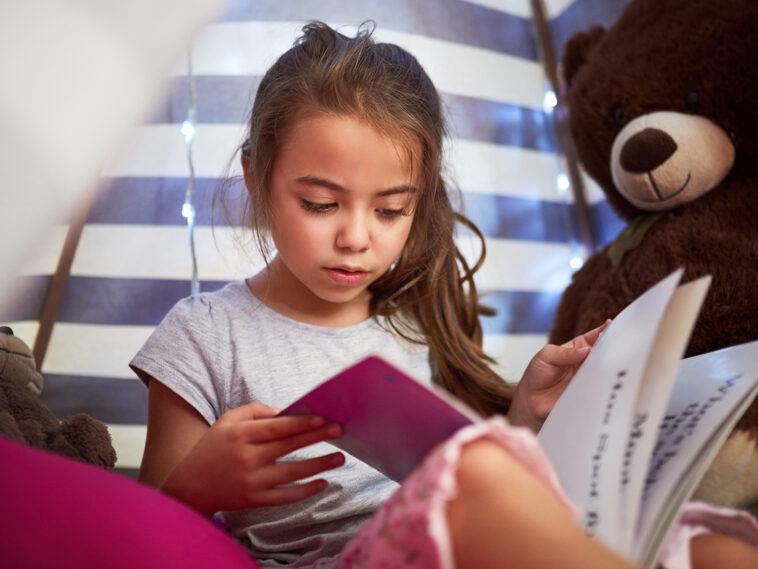Growing up with books is one of the greatest gifts we can give a child. Reading not only enhances cognitive and language skills, but also nurtures a deep-seated curiosity, empathy, and understanding of the world. Our journey with reading begins in infancy, transforming and evolving as we traverse through different stages of childhood and adolescence.
Choosing age-appropriate books can often seem like an intricate task. There are countless factors to consider: the complexity of language, the relevance of the theme, and the alignment with the child’s cognitive and emotional development. Well-chosen literature from Headway can spark a child’s imagination, evoke emotions, inspire creativity, and foster a lifelong love for reading. This guide will delve into these factors, with a focus on the different age brackets, starting from infancy through to late adolescence.
Early Years: Nurturing a Love for Books (0-3 years)
The journey with books begins even before a child can speak. Infants aged 0-3 years are in a crucial phase of language acquisition and cognitive development. Their brains are absorbing everything around them, including the sounds, rhythm, and patterns of language. Reading to them at this stage can be a magical experience, filled with vibrant illustrations, rhythmic verses, and engaging textures.
The key to engaging very young children is to make reading interactive. Infants may not grasp the intricacies of a story, but they can enjoy the rhythm of the language, the warmth of your voice, and the visual appeal of the illustrations. A book can become an enchanting world of sound and color that draws them in, creating the foundation for a lifelong relationship with reading.
Exploring the World: Reading for Curious Toddlers (4-6 years)

As children grow into curious toddlers, their world expands dramatically. They start asking questions, grasping basic concepts, and developing a sense of identity. Publications for children aged 4-6 years should cater to this curiosity, providing stories that explore basic concepts, emotions, and experiences in a fun, engaging manner.
Rhyme and repetition still hold appeal for children in this age bracket. Dr. Seuss’s books, like ‘Green Eggs and Ham or ‘The Cat in the Hat,’ captivate with their clever rhymes and imaginative storylines. They can enhance phonetic awareness and help build vocabulary. Interactive books, like ‘Press Here’ by Hervé Tullet, can also engage children, making reading a playful experience.
Stories about starting school, making friends, or dealing with siblings can provide a safe space for children to explore their emotions and understand their world. Through these stories, children can learn empathy, patience, and resilience, paving the way for their emotional development.
Elementary Adventures: Engaging Books for Young Readers (7-10 years)
Elementary-aged children are typically eager for more complex stories. At this stage, children are beginning to read independently, with an increased attention span and a greater understanding of narrative structures. Publications for children aged 7-10 years should be engaging, with more intricate plots and relatable characters.
Series can be a great choice for this age group. The predictability of recurring characters and settings can provide a sense of familiarity, while varied plots keep the interest alive. Books like ‘The Magic Tree House series by Mary Pope Osborne or ‘The Harry Potter series by J.K. Rowling offer captivating narratives that can motivate children to read more.
Tweens and Teens: Finding Meaningful Reads (11-14 years)

The transition from childhood to adolescence brings a host of changes, both physically and emotionally. Reading for tweens and young teens should reflect these changes, addressing the challenges, emotions, and experiences that come with this phase. From the tumultuous realm of friendships and first crushes to the struggle for independence and identity, books can provide guidance, solace, and a sense of belonging.
Fantasy and dystopian novels often appeal to this age group. Series like ‘The Hunger Games’ by Suzanne Collins or ‘Percy Jackson’ by Rick Riordan are popular, offering thrilling plots, complex characters, and thought-provoking themes. These books can ignite the imagination, stimulate critical thinking, and encourage a deeper engagement with literature.
Books that deal with real-life issues can also be beneficial. They provide a platform for discussion and can help tweens and teens navigate their feelings and experiences. ‘Wonder’ by R.J. Palacio and ‘The Outsiders by S.E. Hinton are examples of books that tackle themes like bullying, peer pressure, and identity with sensitivity and insight.
Young Adults: Exploring Diverse Genres (15-18 years)
Literature for this age group should reflect this journey, offering a diverse range of genres and themes. From fantasy and science fiction to mystery and historical fiction, the array of books available for young adults can cater to varied interests, preferences, and emotional maturities.
Fantasy and science fiction can provide an escape, transporting young adults into different worlds and realities. Books like ‘Divergent’ by Veronica Roth or ‘The Maze Runner’ by James Dashner offer gripping narratives that weave together action, adventure, and intricate world-building. These publications can challenge the imagination, prompting young adults to question, explore, and envision.
At the same time, realistic fiction can provide a mirror, reflecting the struggles, aspirations, and dilemmas that young adults often grapple with. Books like ‘The Fault in Our Stars’ by John Green or ‘All the Bright Places’ by Jennifer Niven delve into themes like love, loss, mental health, and self-discovery with authenticity and nuance. These books can foster emotional growth, empathy, and a deeper understanding of oneself and others.
Navigating Complex Themes: Books for Mature Teen Readers (16+ years)
As teens mature, they become ready to grapple with complex themes and mature content. Literature for this age group can delve into topics like politics, social justice, identity, and philosophy. These books can spark critical thinking, inspire introspection, and stimulate informed discussions.
Dystopian novels like ‘1984’ by George Orwell or ‘Brave New World’ by Aldous Huxley can engage mature teens with their thought-provoking themes and complex narratives. These books can ignite discussions on power, freedom, individuality, and society, encouraging readers to reflect on their values and beliefs.
Books that explore diverse cultures and perspectives can also be enriching. ‘The Kite Runner’ by Khaled Hosseini or ‘Between the World and Me’ by Ta-Nehisi Coates provide insights into different realities and experiences, fostering empathy and a global perspective. These books can challenge assumptions, broaden horizons, and inspire a deeper engagement with the world.

Conclusion
In conclusion, the journey with books is a lifelong adventure, one that evolves and enriches as we navigate through different stages of life. By choosing age-appropriate books, we can foster a love for reading, stimulate intellectual and emotional growth, and equip our children for a lifetime of learning and enjoyment. Whether you’re a parent, a caregiver, or an educator, this guide hopes to serve as a compass, steering you through the vibrant world of children’s and young adult literature. Happy reading!




